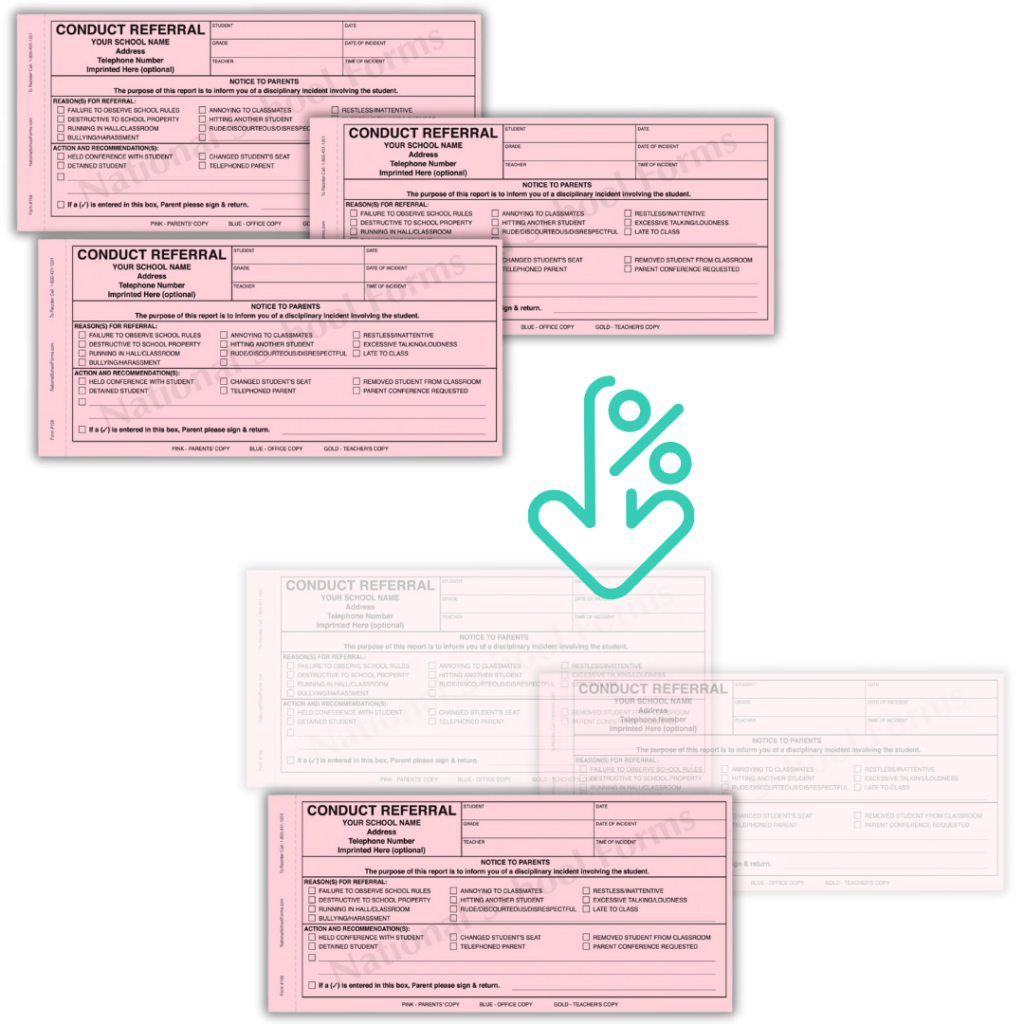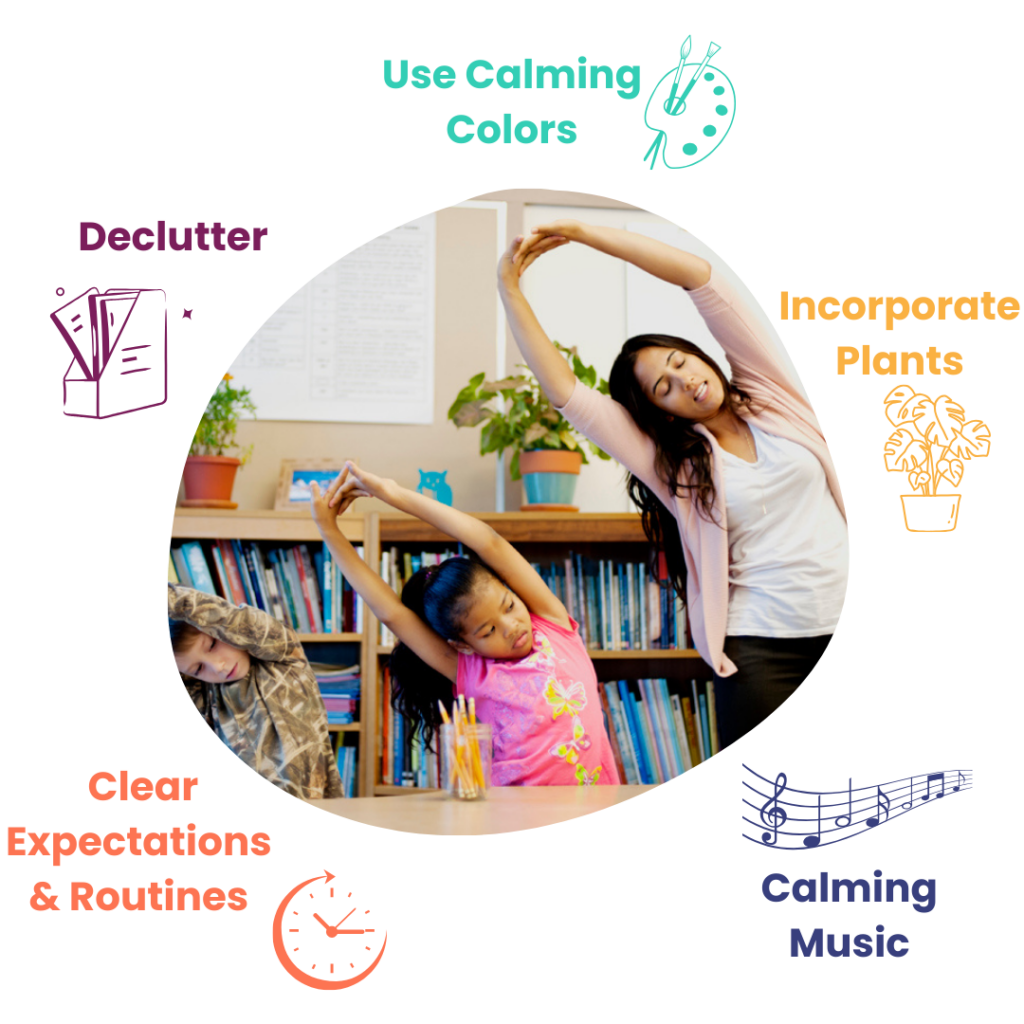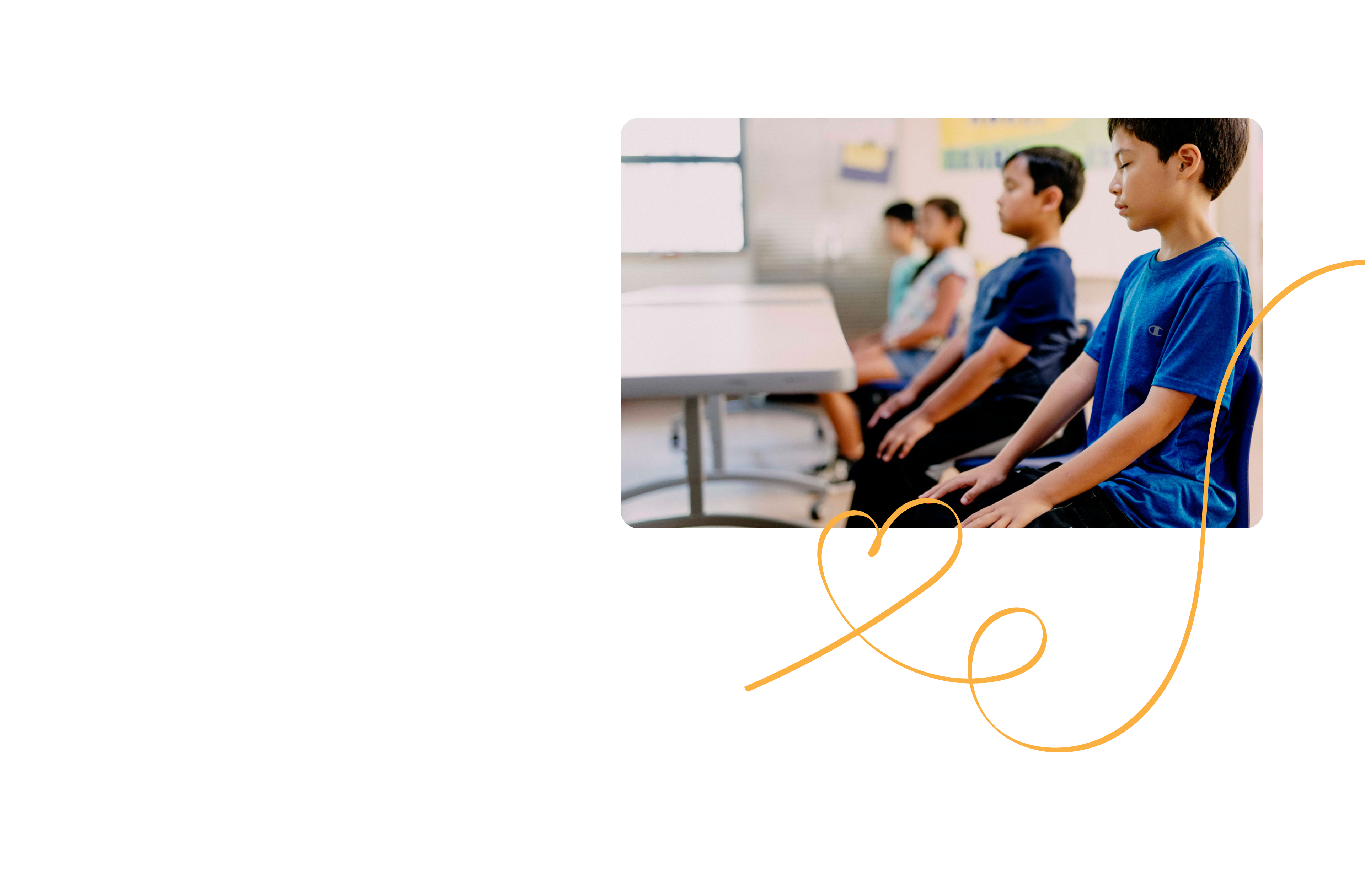Maintaining a calm classroom environment can be challenging at any time, but the start of a new school year comes with its own set of hurdles for teachers to overcome.
Whether you’re new to teaching or an experienced teacher, challenges range from establishing routines with a new group of students to managing varying levels of energy and focus, or adjusting to the unique dynamics of a different class.
These situations require thoughtful strategies to maintain a calm and productive classroom environment. You’ll also need to be prepared for moments throughout the day when students tend to be more restless or distracted, such as at the start of the day or after breaks.
This blog post will cover four calming classroom activities to have up your sleeve at the start of this school year — whether you teach elementary, middle, or high school.
Before we dive into them, let’s take a look at what the science says about calming activities for the classroom.
Why Calming Activities are Essential for Classrooms
We’ve all been there — when the classroom feels on the verge of chaos, whether it’s the noise level rising after lunch or the tension building before a big test. In these moments, incorporating calming activities can make all the difference in regaining focus and creating a supportive learning environment.
Here are five of the most common, science-backed benefits of calming classroom activities.
1. Improved Focus and Learning
Distractions are an inevitable part of any classroom experience — whether it’s fiddling with supplies, exchanging the latest gossip, or the constant siren song of smartphones.
According to research conducted by the California State University of Fullerton on Yoga Ed. by Breathe For Change programs, mindfulness training boosts students’ concentration by bringing their awareness to the present moment.
This improved focus leads to a better learning experience for all students and helps keep the whole class on track.
2. Increased Student Success
As you would expect, increased focus and concentration translate into greater student success and better academic outcomes.
For example, a 2016 study found that mindfulness training improved elementary students’ quarterly grades in reading and science.
3. Enhanced Emotional Regulation
From sudden outbursts during a lesson to tears of frustration over a difficult assignment, emotional dysregulation is a common challenge in the classroom, especially at the start of a new school year.
A study of primary (elementary) school children in the UK found that mindfulness activities boost emotional regulation, contributing to higher life satisfaction and a positive outlook.
4. Positive Relationships and Classroom Environment
When everyone (including the teacher) has the tools and capacity to self-regulate, it creates a more positive and inclusive classroom environment that nurtures positive relationships between students and their teachers.
In fact, one study on Breathe For Change programs found that teachers who practice mindfulness are more present with both their students and their own emotions, which they are more capable of regulating. They also understand that people communicate without words, and that the energy they bring to the classroom affects all of their students. But that’s not all. A study on the impact of teacher wellness programs found that when teachers practiced mindfulness, their students exhibited better behavior, social-emotional skills, and academic outcomes.
5. Mental Health Support
At a time when mental health disorders are increasing among children and teenagers while the gap between those being diagnosed and those receiving treatment is growing, interventions that support their mental well-being are more needed than ever.
One study found that mindfulness training played a protective role in students’ mental health, while another found that even just taking a few slow, deep breaths reduces children’s physiological stress.
4 Effective Calming Activities for You to Implement this School Year
As the new school year begins, having a few simple yet powerful calming activities in your toolkit can help you maintain a peaceful classroom atmosphere.
Here are four effective strategies that you can easily integrate into your daily routine to support both student well-being and learning.
1. Breathing Exercises
There’s a reason we tell someone to take a deep breath to calm down — and it’s rooted in our nervous system.
Deep breathing activates the parasympathetic nervous system, otherwise known as the “rest and digest” response (which is the opposite of “fight or flight”).
Teaching students to take slow, deep breaths or leading them through a guided breathing exercise calms their nervous systems and is a great way to set the tone for the day or help them transition to a new activity.
2. Yoga and Stretching
Like breathing exercises, simple yoga poses and stretching have multiple benefits for students and can help you maintain a calm classroom environment.
For instance, one study found that practicing yoga boosts test scores by up to 18%, while one school noticed an improvement in student behavior, reporting a two-thirds decrease in office referrals.
Simple ways to incorporate yoga and stretching into your teaching practice include:
- Starting the day with a morning stretching routine to warm up bodies and minds.
- “Brain breaks” with simple yoga poses, such as tree pose, seated forward fold, or child’s pose.
- Storytime yoga for younger students, incorporating yoga poses into the story. For example, in a story about animals, students practice the corresponding poses, such as downward-facing dog, cobra, or frog pose.
- Stretching transitions between activities to help students focus and prepare for the next task.

3. Mindfulness and Meditation
As we’ve already seen, mindfulness and meditation have a number of benefits for both students and teachers, and contribute to maintaining a calm classroom throughout the academic year.
Try using guided meditation to help students relax and center themselves at the start of the day. Start with short sessions at the beginning of the year, and gradually increase the duration as the year goes on.
You can also incorporate mindfulness moments throughout the day, asking students to focus on the five senses or practice gratitude in between activities.
4. Art
You can think of art as a form of mindfulness practice, and like the activities mentioned above, calming art activities such as drawing or coloring mandalas are proven to improve student behavior and academic performance.
Creating a Calming Classroom Environment
The physical environment you create in your classroom influences the way students respond to and interact with their learning experience and one another.
Ways to promote calm include decluttering, using calming colors, and incorporating natural elements like plants. You might even want to play calming music or nature sounds during independent work or quiet time to create a soothing atmosphere.
Additionally, setting clear expectations and routines can contribute to a sense of security and calm for students — particularly at the start of a new school year when they might feel overwhelmed or nervous.

Help Students Find Calm this Academic Year
The start of a new school year represents a golden opportunity to set your students up for success. If you’re looking for resources to help you implement the suggestions outlined in this blog post, download our free “Supercharge the School Year” toolkit. In it, you’ll find yoga and breathing exercises, activities to cultivate belonging, tips, research, and more! Download the toolkit now.





